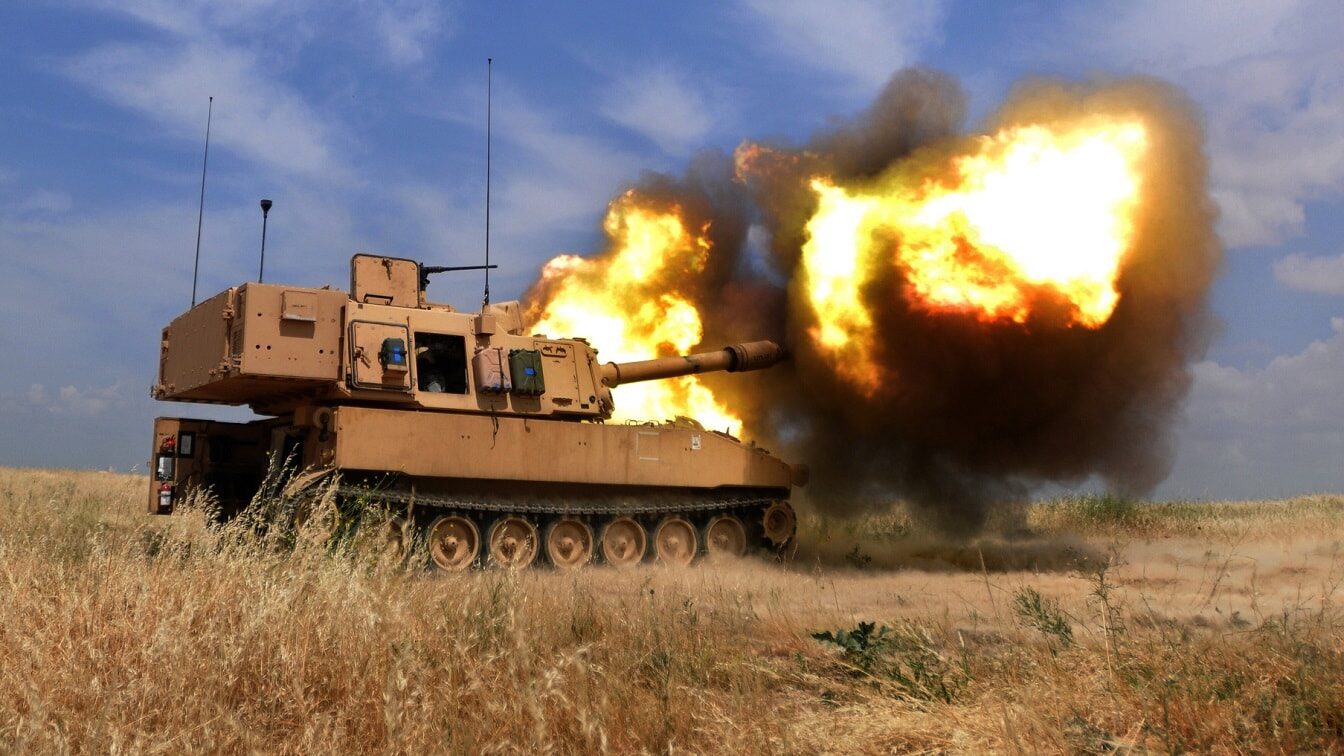Does the U.S. military have an artillery ‘ammo’ crisis on its hands due to the Ukraine war? The “Shell Crisis of 1915” was so great it led to a political crisis in the UK. It occurred due to the British Army expending far more ordnance along the Western Front during the initial stages of the First World War than domestic production could keep up with, and it resulted in a failed British offensive.
The United States Department of Defense (DoD) is now taking measures to ensure it won’t face a similar problem due to the amount of ordnance that has been supplied to Ukraine. This week, the U.S. Army announced it was moving to expand the production capacity of the widely employed 155mm artillery rounds.
According to a recent Pentagon report, the United States had sent Ukraine more than a million rounds – part of the $27.8 billion in security assistance provided to Ukraine since the start of the Biden Administration.
However, Ukraine had been expending, on average, some 3,000 rounds daily, while over the summer, there were reports that Kyiv’s forces were firing as much as 5,000 to 6,000 rounds a day. That rate of fire depleted such stockpiles in just over 100 days.
Wear and Tear
In fact, as previously reported, the artillery duels with Russia have been so great that the barrels of some artillery pieces have been wearing out.
As a result of the shortage of ammunition and wear to the weapons, Ukraine’s forces had resorted to relying on older 105mm guns. Those older weapons also couldn’t handle such a rate of fire.
Ramping Up Production
Prior to the war, the U.S. production capacity for 155mm shells was around 14,400 monthly, DefenseNews reported. The U.S. is now hoping to produce 90,000 shells a month – which still won’t meet the demand, but it would be a vast improvement if the Pentagon continues to send the artillery ordnance to Ukraine.
Currently, 155mm rounds are almost exclusively produced at the Iowa Army Ammunition Plant (IAAAP) in Des Moines County, Iowa. Established in 1941, the facility is part of the U.S. Army Joint Munitions Command. Production at the plant stopped at the end of World War II in 1945 but resumed in 1949.
The Army is now working with General Dynamics Ordnance and Tactical Systems (GD OTS) to expand production capacity at Scranton Army Ammunition Plant in Pennsylvania and a neighboring facility.
The Army is also under contract with GD OTS to stand up another plant to do the same work at a facility in Garland, Texas.
This comes even as NATO officials have discussed the possibility of resuming the production of artillery ammunition for Soviet-era systems in Slovakia, as Ukraine continues to operate a vast number of such weapons. Plants in Snina and Dubnica nad Váhom have the capacity for the required production. The Czech Republic and Bulgaria have also been named as nations that could aid in producing ordnance for Soviet-made platforms.
Currently, about a third of Europe’s production of 155mm artillery ordnance is handled by the Czech-based CSG. It now produces about 80,000 to 100,000 shells annually but has sought to expand that number to 150,000.
MORE: Why Putin Fears the M1 Abrams Tank
MORE: I Went to War in the Leopard 2 Tank Ukraine Wants
MORE: World War III – Where Could It Start?
MORE: A U.S.-China War Over Taiwan Would Be Bloody
Author Experience and Expertise: A Senior Editor for 19FortyFive, Peter Suciu is a Michigan-based writer. He has contributed to more than four dozen magazines, newspapers, and websites with over 3,200 published pieces over a twenty-year career in journalism. He regularly writes about military hardware, firearms history, cybersecurity, politics, and international affairs. Peter is also a Contributing Writer for Forbes and Clearance Jobs. You can follow him on Twitter: @PeterSuciu.

